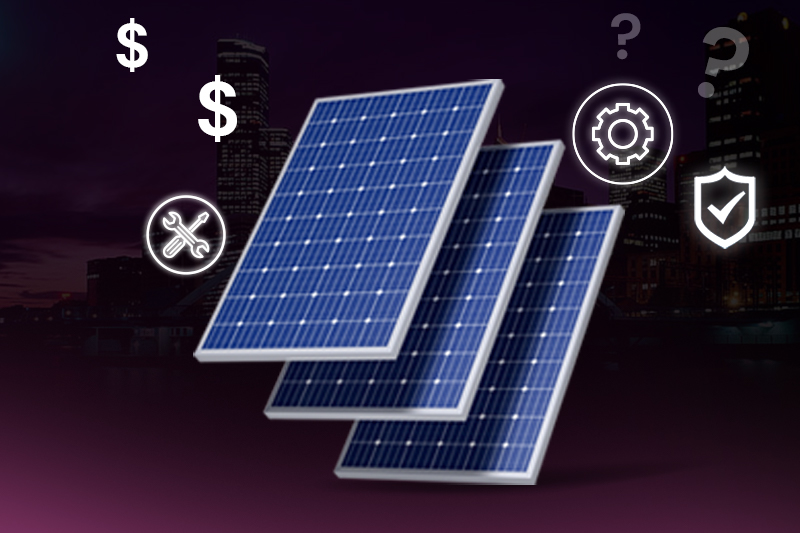Bathed in abundant sunshine and vast open areas, Australia is geographically blessed with the most favourable conditions for solar energy generation.
In recent years, most Australian residents have utilized these natural benefits to lead a global shift towards renewable energy. However, not only the residents but also the federal government also helps to accelerate this solar revolution.
The government is encouraging solar adoption by providing subsidies and a range of financial incentives. These initiatives help to fulfil the broader vision of sustainable development goals while transforming the nation’s energy landscapes.
Eager to know more?
This blog will uncover all the details on how government policies influence solar energy adoption in Australia.
So, without any further ado, let’s get started!
Understanding the Adoption of Solar Energy | Why It Matters?
When the world seeks a sustainable, reliable energy solution, the adoption of solar energy has illuminated the path with its spark.
Adopting solar energy means embracing the sun’s power, one of nature’s most abundant resources. Converting this sunlight into electricity ensures a viable and sustainable solution for your daily energy needs.
Moreover, choosing solar energy to power your home means you no longer need to depend on burning fossil fuels.
This significantly lowers our carbon footprint and also helps to reduce dependency on the national grid.
Are Government Policies Important for Adopting Solar?
Yes, government policies have a significant impact on how solar energy is adopted.
It plays a vital role in fostering the growth of solar energy through solar investment tax credits, feed-in tariffs, and several incentive programs.
Worried about the high cost of solar panel installation? Don’t stress yourself.
Federal solar policies like the Small-scale Renewable Energy Scheme (SRES), Renewable Energy Target (RET), and state-based incentives help to lower the high upfront cost, increasing solar energy adoption.
These rebates and incentives provide financial support to increase the use of solar energy. They encourage long-term savings by reducing electricity bills and increasing property value.
Moreover, they promote sustainability, making this clean, renewable energy source more accessible and affordable for all.
So, take advantage of this financial assistance or government policies of Australia to make solar panel installation more affordable and beneficial in the long run!
Australia’s Solar Revolution: How Government Policies Drive Solar Adoption in Australia 2024?
Government policies on solar panels and battery rebates are common and most effective ways to promote solar.
In Australia, rooftops adorned with solar panels have become a common view, representing a collective move towards a green, sustainable future.
As the world gravitates towards renewable energy sources, grants, tax credits, and feed-in tariff programs help people invest in clean energy by lowering ongoing costs for solar installation.
Government Policies for Solar Energy Adoption

Subsidies and Financial Incentives
- Solar Investment Tax Credits (ITC): In Australia, the government provides tax credits to people who invest in solar panel systems. This credit program allows Australians to deduct a specific portion from their taxes for solar installation.
- Grants and Rebates: The Government grants or rebates on solar reduce the higher upfront cost and all the expenses associated with solar panel and battery installation. This made solar energy economically viable and accessible for all.
- Performance-based incentives: To promote the adoption of solar energy, the federal government provides several performance-based incentives.
These incentives act as a government reward based on the energy their systems generate.
Renewable Energy Targets (RETs)
In 2008 the federal government of Australia introduced the Renewable Energy Target scheme. The designed scheme ensures that a percentage of Australia’s energy comes from renewable sources.
The RET scheme works under two criteria: one is the Large-scale Renewable Energy Target (LRET) and the Small-scale Renewable Energy Scheme (SRES).
- Large-scale Renewable Energy Target (LRET)
The LRET works by creating Large-scale Generation Certificates (LGCs). People can sell or trade these certificates to gain financial benefits, encouraging further development in large-scale renewable energy projects.
- Small-scale Renewable Energy Scheme (SRES)
The SRES operates through Small-scale Technology Certificates (STCs). It is designed to promote the uptake of small-scale renewable energy systems, primarily aimed at residential and small business installations
So, together, the LRET and SRES form a complete framework to promote renewable energy generation in Australia.
Feed-in Tariffs (FiTs) and Net Metering
In Feed-in Tariffs (FiTs) or net metering programs, solar energy system owners can reduce their power costs by sending the excess generated energy into the grid.
This promotes customer involvement in solar energy, enhancing the national grid stability.
Public Awareness Campaigns
Public awareness campaigns are crucial to influence solar energy adoption in Australia.
Why? They can improve public perception, and government initiatives that promote the benefits of solar energy can increase Australia’s solar adoption rates.
Let’s illustrate by using an example: campaigns highlighting the cost savings associated with solar energy and its environmental benefits can motivate more Australians to consider installing solar panels, boosting the solar adoption rate.
Research and Development Funding
Governments can fund research initiatives to lower costs and improve the efficiency of solar panels and battery storage systems. This drives the solar industry, making it more attractive to consumers.
International Agreements and Cooperation
In recent years, international agreements and cooperation on solar energy have become vital for addressing global energy needs and climate change.
Many countries have strived to transition to renewable energy. To achieve the target, they participated in various international agreements, such as the Paris Agreement.
Countries can align with international goals to enhance technological advancements, share knowledge, and mobilize resources to promote solar energy distribution.
Does Regional Variation in Policy Influence Solar Energy Adoption Rate?
Yes, geographical location and regional variation in policy matters for solar energy adoption in Australia.
The interplay of state-level government policies, regulatory framework, local climate conditions, and community engagement shapes the solar energy landscape across Australia.
States with more generous incentives and responsible people who are aware of a sustainable lifestyle have the highest adoption rate for solar.
Additionally, areas with better sun exposure and suitable climate conditions and following streamlined regulations often experience quick rises in solar installation.

Australian State-Level Government Policies and Incentives
In general, each state and territory have its own approach to renewable energy, leading to different levels of solar energy adoption in Australia.
Here are the available key Government policies and initiatives across major states of Australia in 2024:
Queensland
Queensland has one of the highest numbers of solar-adopted homes in Australia. It’s renowned for its generous feed-in tariff and rebates, which allow up to $26,00 off a 6.6kW PV system installation.
The state government aims to achieve 50% of the renewable energy target by 2030. These policies encourage homeowners to invest more in solar energy, making it more affordable for low-income households.
Victoria
Victorians also see high solar adoption because the government offers nearly $1,400 for solar panel (PV) system installation.
Several awareness campaigns and educational programs on the benefits of sustainable, renewable energy sources further drive solar adoption rates in this state.
The government also allows rebates and interest-free loans for solar panel installations and battery storage systems.
New South Wales
New South Wales (NSW) has different incentive programs for solar panel installation for low-income households.
Starting from 1 November 2024, the NSW Government offers $1,600-$2,400 incentives for solar battery installation. This government incentive comes under the Peak Demand Reduction Scheme (PDRS), which targets to reach net-zero emissions by 2050.
The government has already started working on designated areas to reduce the carbon footprint to 70% by 2035. The project also aims to enhance the stability of the Australian national grid.
South Australia
The southern part of Australia has the best conditions for solar adoption. In addition to government policies, high sun exposure is an added benefit for the residents.
The state’s renewable energy target is 100% renewable energy generation within 2030. So, in addition to providing financial assistance for solar panels, the government also offers around $2,000 in subsidies only for solar battery system installation.
Australian Capital Territory (ACT)
ACT state governments offer up to $5,000 rebates to achieve 100% renewable energy.
The local community and government are working together to maintain this status. The government policy supports solar installation in diverse environments, from rental properties to low-income households.
Tasmania
Several policies for installing solar systems and energy storage solutions are available for Tasmanian residents.
They integrate solar with other renewable sources, such as wind and hydro, to maximize energy production. The state government also provides a solar subsidy of around $1,875 to install a 5kW solar panel system.
Northern Territory
The people of NT are focusing on increasing the use of renewable energy to fulfil the renewable energy strategy and meet their daily energy demand.
The programs ensure that 50% of power is derived from renewable energy sources by 2030. They also support feed-in tariff programs leveraging financial benefits to local communities.
Western Australia
Government policy in Western Australia encourages people to participate in solar bulk buy programs. These initiatives enable groups of residents to purchase solar systems at discounted rates, increasing Australia’s overall solar adoption rate.
Their support for community solar projects enhances local engagement and investment in solar energy.
The Adoption Dilemma and Challenges of Solar Energy
Despite having government policies and technological advancements in the solar sector, Australia’s path to clean electricity was never smooth.
Residents faced many challenges related to solar adoption and overcame the barriers to create a resilient energy future.
Besides policy uncertainty, economic factors, and many other regulatory hurdles, state-based policy variability also slows down solar deployment projects. So, let’s take a glance at the details in the following section.
Uncertainty in Solar Energy Policies
Changes in policies or any inconsistency can significantly impact the rate of solar energy adoption in Australia.
While long-term policies attract investors and consumers willing to invest in solar technology, unstable, short-term policies discourage them easily, slowing down the growth process.
Economic Factors
Government incentives and rebates can bridge the gap, making solar energy more accessible. This helps low-income people who face financial hurdles but want to enjoy the benefits of solar panels.
However, broader economic conditions can influence the effectiveness of government policies. For example, governments may cut funding for renewable energy programs during economic downturns, hampering Australia’s solar adoption rates.
Issues with Local Politics and Governance
In Australia, government policies and rebates vary from state to state. Suppose one state has all the favourable conditions for solar energy while the other doesn’t.
This variability in solar incentives ultimately leads to uneven distribution, thus influencing the solar energy adoption rate in Australia.
Technological Advancement and Public Perception
Recent technologies and new materials in solar panel manufacturing are fuelling the solar industry worldwide. Therefore, government policies must be adapted accordingly to support these advancements and create a compelling solar market.
Besides regulatory hurdles, outdated policies, negative perceptions about solar effectiveness, or concerns about aesthetics can also obstruct solar adoption.
So, to mitigate these concerns, the Australian government should run educational initiatives and campaigns on these solar energy rebates.
Future Trends: Emerging Policies and Their Potential Impact on Solar Adoption in Australia

The future prospects of solar energy adoption in Australia look promising enough to create a sustainable world. Along with emerging trends in solar technology, government policies also help to accelerate this transformative shift to solar power.
This new wave in Australia’s energy sector boosts the economy and mitigates climate issues, ensuring long-term sustainability.
As more Australians recognize the benefits of solar energy, there is a growing demand for supportive policies that can sustain and accelerate this trend.
However, to maintain this solar trend, the government should develop innovative policies and continue finding ways to increase solar adoption.
So, here are some ideas about the emerging policy that make solar adoption effective in Australia:
- If initiatives like the Small-scale Renewable Energy Scheme (SRES) and feed-in tariffs are maintained or expanded, more homes and businesses can embrace solar power.
- Policies offering upfront rebates or payments for solar energy fed back into the grid can boost adoption rates.
- Extensive research and development are necessary because they can lead to innovations that make solar technology more efficient and cheaper, driving adoption.
- Energy storage is a significant factor in obtaining reliable power during power failures. Government policies promoting energy storage, like rebates on solar battery installations, can enhance Solar’s attractiveness and reduce the cost.
- A hybrid solar system can increase overall system efficiency and make it appealing to its users.
- Enhancements in schemes that reward renewable energy generation can provide additional financial incentives for solar adoption.
- Promoting policies regarding community-based solar projects can enhance accessibility for people without suitable solar panel installation conditions.
- Educating the public about the benefits of solar energy and how to navigate the market can increase adoption rates.
Are you looking for the best Solar panel offers in Australia?
Don’t forget to contact Solar Emporium today! We provide sustainable energy solutions to help you transition smoothly into the world of solar.







